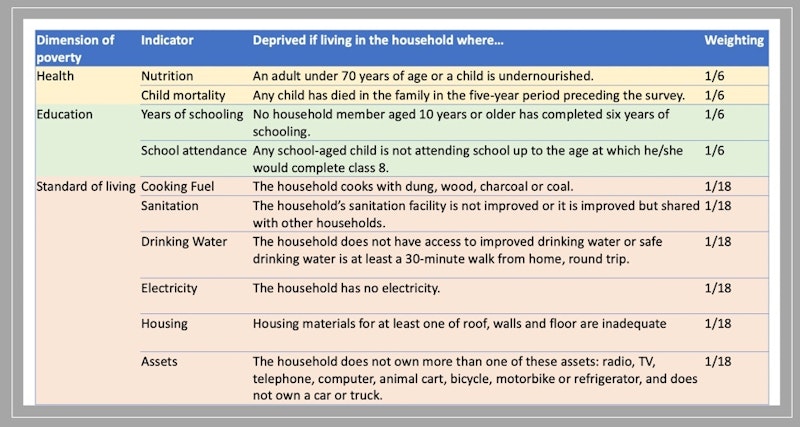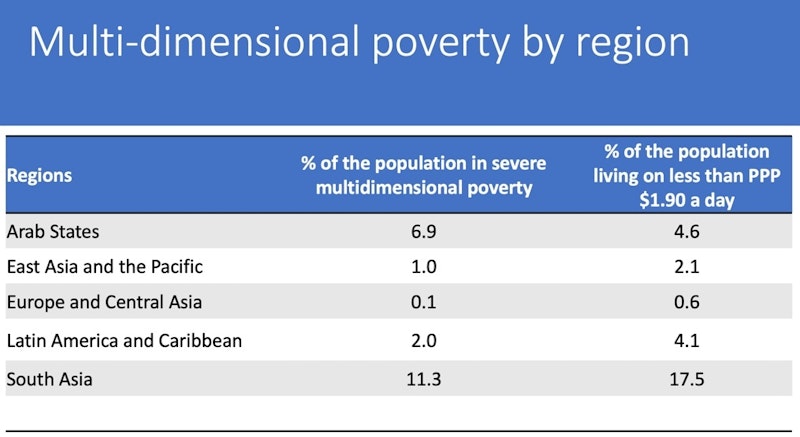Topic Videos
Development Contrasts: Multi-dimensional Poverty
- Level:
- A-Level, IB
- Board:
- AQA, Edexcel, OCR, IB, Eduqas, WJEC
Last updated 1 Jan 2020
Poverty is multi-dimensional – we look at the latest data on severe multi-dimensional poverty for a range of emerging and developing countries in this short revision video.
Understanding and measuring poverty is different for countries because poverty is multi-dimensional. Health, Education and the Standard of living are all dimensions of tracking poverty.
The United Nation’s Multi-dimensional Poverty Index which has been published since 2010 is an attempt to go deeper than the basic Human Development Index to see if progress is being made - against sustainable development standards – to lower the vulnerability of people in emerging and developing countries to severe deprivation.

Here is a selection of data on multi-dimensional poverty for a number of emerging and developing countries.
In Niger where per capita incomes remain below $1,000 a year, nearly three quarters of the population are found to be in severe multi-dimensional poverty. Just under half of the population live under $1.90 a day (PPP adjusted) and the country comes bottom of international rankings for the HDI. In fast-growing Ethiopia, per capita incomes are twice as high and extreme poverty is much lower but still around two thirds of the population are in severe multi-dimensional poverty.
Severe multi-dimensional poverty falls as per capita incomes rise but it is not a linear improvement. Rwanda for example has a significantly lower per capita income than Angola but less than a quarter of the population are in severe multi-dimensional poverty compared to around a third for Angola. Cambodia outperforms Bangladesh using this measure despite having a per capita income that is $500 lower.
India has managed to lower the scale of severe multi-dimensional poverty to below 10 per cent of the population although many millions remain vulnerable to this situation.
Vietnam has a lower per capita income than India, yet their severe multi-dimensional poverty rate is less than one per cent of the population and only two percent of inhabitants live on less than $1.90 a day. Vietnam’s relative success in providing widely available basic health care and other infrastructure such as core sanitation facilities helps explain this difference. The state has a crucial role to play in providing the public goods at scale necessary to reduce multi-dimensional poverty.

You might also like
Private Sector and Economic Development
Study Notes

Premature Deindustrialization in Africa
8th November 2015

Macroeconomic Profile for South Korea
11th March 2016

How Brexit might impact on developing countries
13th September 2016

Development Economics - Vending Machines and Retailing in Kenya
14th December 2021

The True Cost of our Obsession with Superfoods
15th January 2023
